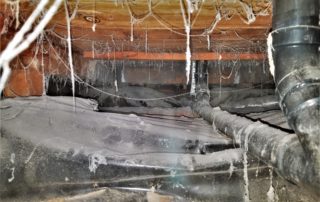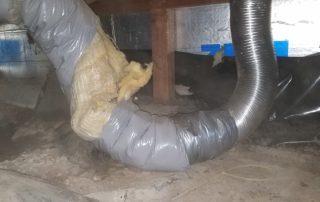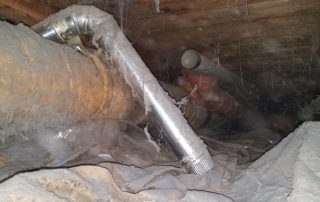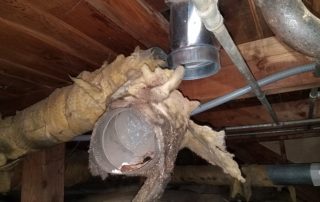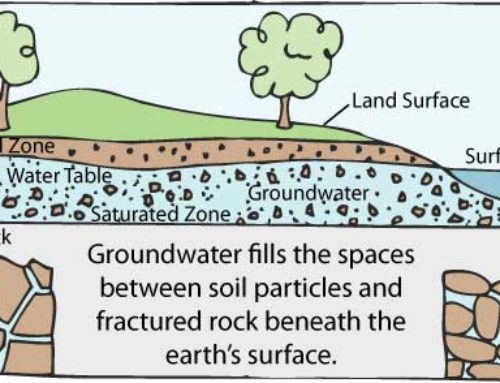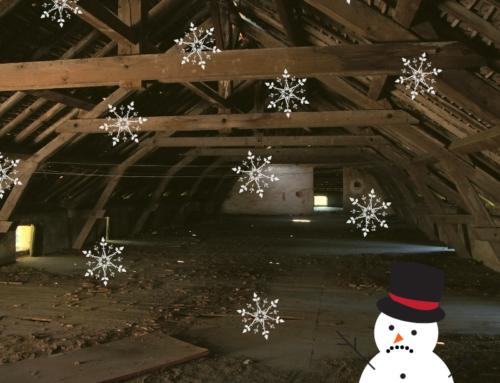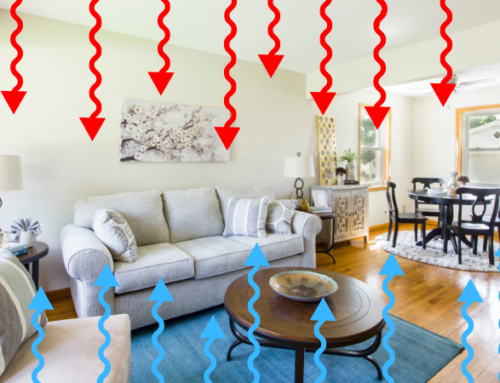Dryer Vents & Your Crawl Space
Portland Or, Vancouver Wa
I have had the privilege of going into thousands of crawlspaces over the past decade and I am still alive to talk about it. You know the place I am talking about, that dark, confined area that you regretfully have to enter or bribe somebody to take the plunge for you. I know when I get in a crawlspace and it has a fragrant Downy fresh smell and looks like a winter wonder land, a dryer vent line has come loose. The topic of dryer vents seems to be one of those items that are last on the list to think about until it gives you big problems.
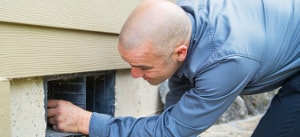
The Basics:
Drying clothes creates heat, water vapor and potentially flammable lint. Blocked dryer vents can create a high heat condition which may lead to dryer burnout or at the very worst, a fire.
Broken dryer vents can introduce heat and water vapor into the crawlspace which can create the optimal conditions to promote mold growth and dry rot. A broken or disconnected dryer vent also creates a huge mess in the crawlspace. Cleaning it up is very time consuming and sometimes it is more cost effective to just brush the crawlspace down and replace the vapor barrier.
WHAT’S THE BIG DEAL ABOUT WHAT MY DRYER VENT IS MADE OF?
Inferior construction materials such as plastic tubing and flexible metal ducting can impede the airflow, making your dryer work harder than it should to push the lint out due to ridges built in to the tubing. Over time this tubing becomes brittle and starts to break due to the heat and water vapor produced by your dryer. It stands to reason that even though these ducting materials are easier to install, their performance and durability lack longevity and optimal performance. These materials are typically sold alongside the proper ducting materials and termination vents at your local home improvement store. As Indiana Jones Dad said to his son. “Choose Wisely” The great story behind that statement is that they had been studying the code for a very long time.
Here is the quick reference when installing a dryer vent and maintenance.
How Long Should my Dryer Vent be?
Keep it as short as possible. It is recommend not to exceed 35 feet from the dryer to the exterior termination.
Every bend or turn you use to get the dryer line to the exterior of your home takes up 3-5 feet of that initial 35 feet
How Big Should my Dryer Vent be?
The diameter of the line should be 4 inches with smooth surface metal ducting and suitable strapping to stabilize the dryer line. Durable metal gauge dryer vent material that is properly strapped and attached gives a peace of mind that the stuff your dryer makes gets to the end destination, outside of your home. It makes maintaining your dryer line, when you have it cleaned, easy and straight forward.
When Should I End the Dryer Vent and Where?
The dryer termination should have a full 4 inch opening. Typically there is a flap to discourage animal entry. Beware of dryer vent terminations that have grid exterior covers or screened. Lint can build up on them quickly and create a lint blockage if not cleaned on a regular basis.
All dryer vents should terminate on the exterior of the home.
What to Avoid When Installing Your Dryer Vent
Avoid using flexible or plastic ducting. These are inferior building materials that can create a potential fire hazard and it does not meet up with building code.
Avoid excessively long dryer vent runs and multiple turns whenever possible

Thanks for reading and I live to write another day!
For those of you who want the code for dryer vent installs I have included the IRC codes below as a reference.
International Residential Code (IRC) SECTION M1502 CLOTHES DRYER EXHAUST guidelines:
M1502.5 Duct construction
Exhaust ducts shall be constructed of minimum 0.016-inch-thick (0.4 mm) rigid metal ducts, having smooth interior surfaces, with joints running in the direction of air flow. Exhaust ducts shall not be connected with sheet-metal screws or fastening means which extend into the duct.
M1502.6 Duct length
The maximum developed length of a clothes dryer exhaust duct shall not exceed 35 feet from the dryer location to the wall or roof termination. The maximum length of the duct shall be reduced 2.5 feet for each 45-degree (0.8 rad) bend, and 5 feet for each 90-degree (1.6 rad) bend. The maximum length of the exhaust duct does not include the transition duct.
M1502.2 Duct termination
Exhaust ducts shall terminate on the outside of the building or shall be in accordance with the dryer manufacturer’s installation instructions. Exhaust ducts shall terminate not less than 3 feet in any direction from openings into buildings. Exhaust duct terminations shall be equipped with a backdraft damper. Screens shall not be installed at the duct termination.
M1502.3 Duct size
The diameter of the exhaust duct shall be as required by the clothes dryer’s listing and the manufacturer’s installation instructions.
M1502.4 Transition ducts
Transition ducts shall not be concealed within construction. Flexible transition ducts used to connect the dryer to the exhaust duct system shall be limited to single lengths not to exceed 8 feet, and shall be listed and labeled in accordance with UL 2158A.
M1502.4.2 Duct installation
Exhaust ducts shall be supported at intervals not to exceed 12 feet and shall be secured in place. The insert end of the duct shall extend into the adjoining duct or fitting in the direction of airflow. Exhaust duct joints shall be sealed in accordance with Section M1601.4.1 and shall be mechanically fastened. Ducts shall not be joined with screws or similar fasteners that protrude more than 1/8-inch into the inside of the duct.

